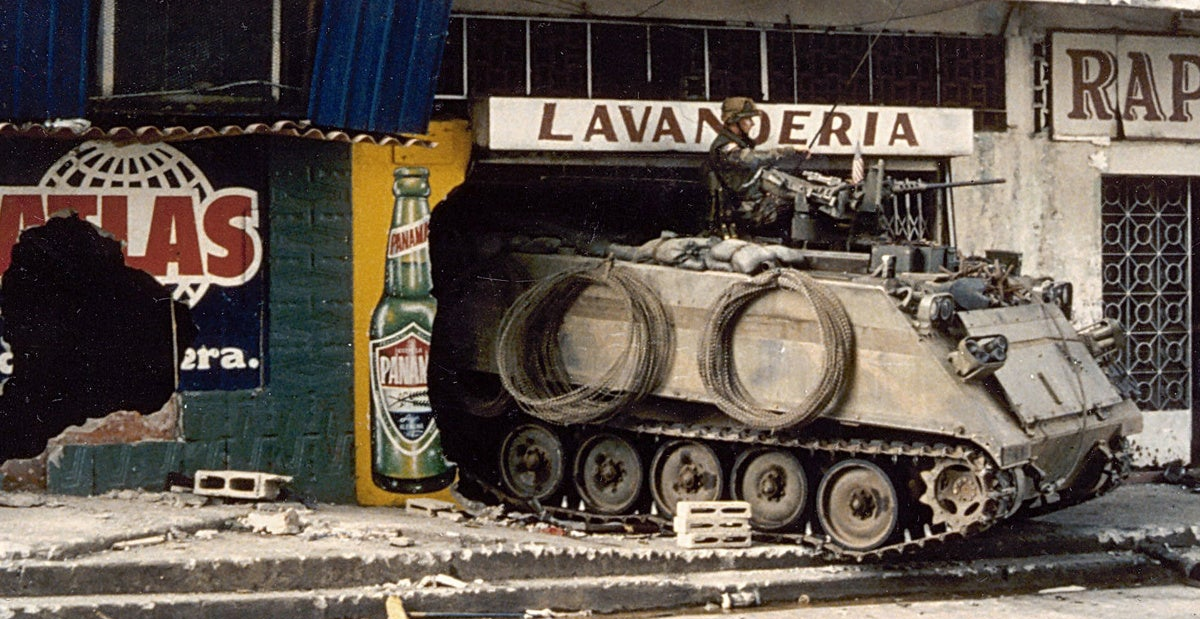
Panama City, December 20 (RHC)-- On December 20, 1989, the United States invaded Panama, in what would later be known as "Just Cause" -- an operation that involved 25,000 U.S. soldiers, in addition to the troops that usually remained in the bases near the Panama Canal.
Thousands were killed, some estimates say as many as 5,000 – but there's no way to know exactly how many lost their lives because U.S. forces used bulldozers to dump thousands of bodies into common, unmarked graves.
The military invasion's stated objective was to capture the then president Manuel Antonio Noriega, military and political leader who held power in the Isthmian country. His mandate began in 1983, succeeding Rubén Darío Paredes and Omar Torrijos. From being one of the most loyal collaborators of the Central Intelligence Agency (CIA) and the Drug Enforcement Administration (DEA), Noriega became an enemy of Washington.
The conflict came when Noriega announced that the U.S. School of the Americas, a military academy that had operated in Panama since 1946 -- described by the media as the "School of Assassins" where he himself had been trained -- had to leave the country.
After leading the Central American nation in a campaign of covert actions to destabilize it, the then president of the United States, George H.W. Bush, justified the invasion based on four reasons: the protection of the lives of American citizens residing in Panama; the restoration of the democratic system and the desire to ensure the proper functioning of the canal; and promising to capture General Noriega to bring him before the American justice system.
However, secret documents revealed much later revealed the true intentions of the White House with this unlikely operation. One of them was to abrogate the treaties involving the Panama Canal, and ensure its control beyond the year 2000, and on the other hand, to cancel the contracts with Japan for the alternatives to the Canal and cut off its rise to world power.
Among the first objectives pursued by the invaders were the military barracks of the Panama Defense Forces, but the actions in those sites had repercussions in the surrounding civilian areas, affected both by the direct action of the U.S. troops and by the subsequent looting.
What was initially focused on the Panamanian military forces, spread to the civilian population and the infrastructure of several residential areas. The numbers of dead and wounded were dramatic and vary depending on the sources.
In addition to the human losses, this invasion caused the destruction of a large part of the country's infrastructure, leaving thousands of people homeless, forced to move from their homes, taking refuge in other territories.
Although Panama City was the hardest hit by this war operation, there were also victims in Colon and Rio Hato. These areas, according to the Inter-American Commission on Human Rights (IACHR), "were indiscriminately bombed and burned." Another of the most affected residential areas was El Chorrillo, where more than 30,000 people lived on some 20 hectares.
The high number of homes and buildings affected by the invasion shows that the US troops did not make the slightest effort to limit themselves to military targets and avoid damage to the lives and property of the Panamanian civilian population.
As a result, according to the complaint filed with the IACHR, 18,000 civilians were left homeless.
Despite promises by the invaders to compensate for the damage caused to the homes of these refugees, the truth is that it has not been enough for those affected.
A study by the Norwegian Institute for Research in Economics and Business Administration (SNF) pointed out that in the financial sector the vast majority of the money "is of US origin, making Panama the largest US-influenced tax haven."
Thus, during the first years of the second millennium, thousands of companies have settled in the country, and hundreds of multinationals have set up operations. This reality contrasts with Panama's poverty rates. In Panamanian cities today, large skyscrapers, owned by lucrative companies, coexist with the impoverished housing of ordinary citizens.
In 1997, 37.3 percent of the population was in poverty, including 18.8 percent in extreme poverty. In 2017, the situation had not changed much, as according to data from the Economic Commission for Latin America and the Caribbean (ECLAC), poverty remained at 20.7 percent plus 9.8 percent in extreme poverty, or an overall rate of 30.5 percent.
Even today, justice has not been done for the thousands of victims of these events, and several Panamanian collectives speak out every year on this date to pay tribute and demand justice.

